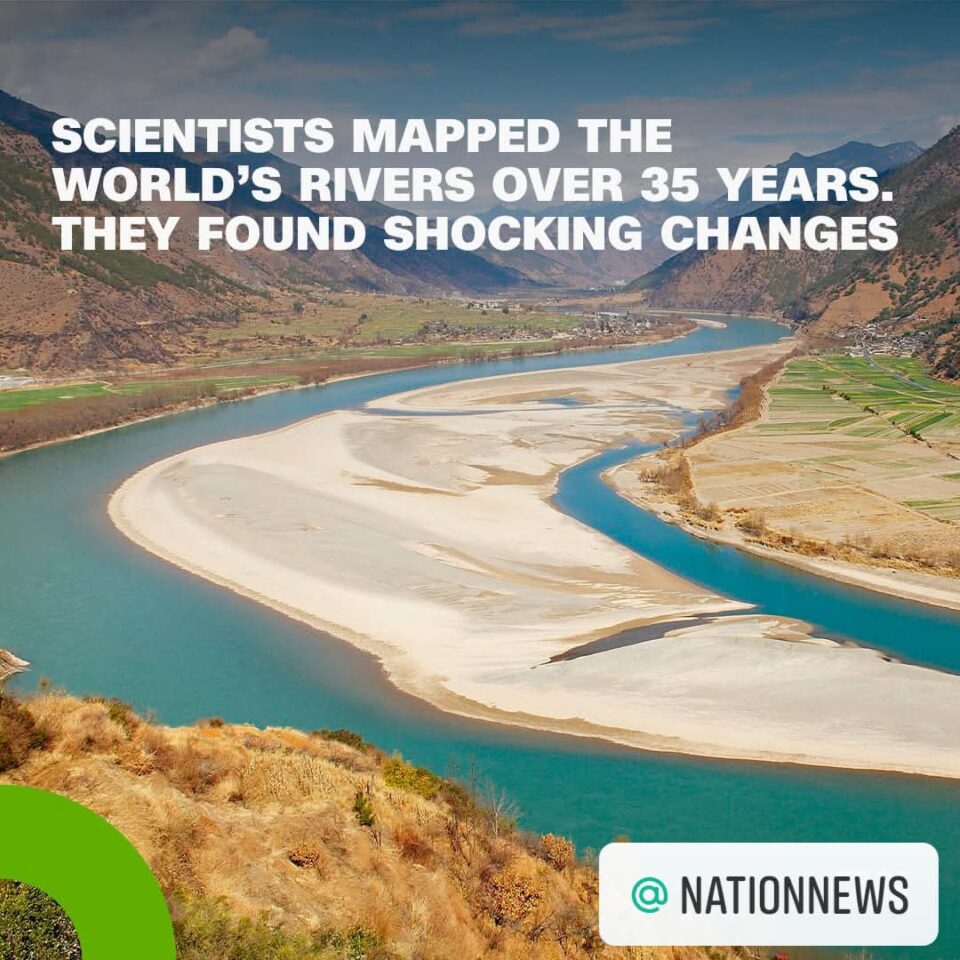The nearly 3 million rivers that weave across the world are experiencing rapid and surprising changes, with potentially drastic implications for everything from drinking water supplies to flood risks, according to a new study.
Scientists mapped the flow of water through every single river on the planet, every day over the past 35 years, using a combination of satellite data and computer modeling. What they found shocked them.
Nearly half of the world’s largest downstream rivers — 44% — saw a drop in the amount of water flowing through them each year, according to the research published Thursday in the journal Science.
Rivers such as the Congo, Africa’s second largest river, the Yangtze, which weaves through China, and South America’s Plata saw significant declines, said Dongmei Feng, the study’s lead author and a hydrology professor at the University of Cincinnati.
Previous studies have tended to focus on water flows through only the biggest rivers and produce results limited to specific locations at specific points in time, said Colin Gleason, a study co-author and a professor of civil and environmental engineering at UMass Amherst.
The methods used in this research allowed them to look “everywhere all at once,” he told CNN. While this may not yet give the local precision of other studies, “we think this is maybe the most accurate map of river flow ever made,” he said.
Gleason’s conclusion: “Holy cow, the rivers of the world are a lot different than we thought.” Some are changing by 5% or 10% a year, the report found. “That’s rapid, rapid change,” he said.
Significant decreases in downstream rivers mean less water is available on the largest parts of many of the planet’s rivers, the report noted. This translates to less freshwater for people to drink, to water crops and to sustain livestock.
Slower flows also mean rivers have less power to move sediment, made up of dirt and small rocks. This has big impacts further downstream as sediment is vital to build river deltas, which provide natural protection against sea level rise.
For the smallest rivers, many of which are affected by increasing ice and snow melt as the world warms, faster flows can have some positive impacts, such as providing nutrients to fish and helping with their migration.
But it also causes problems. Faster flow may “throw an unexpected wrench” in hydropower plans in areas such as the Himalayas as more sediment is transported downstream, potentially clogging up infrastructure.
The next step is to unpick exactly why these river flows are altering so rapidly and work out how to respond.
“There is a direct link between human activity and the changes to our life-giving water cycle,” Cloke told CNN. Protecting rivers means burning far fewer fossil fuels, adapting to changes already locked in and responding to knock-on impacts of human actions, such as altering river channels and building on flood plains, she added.
“Rivers are dynamic and beautiful beasts,” Cloke said, “and humans should never take them for granted or squander the resources they provide us with.”

